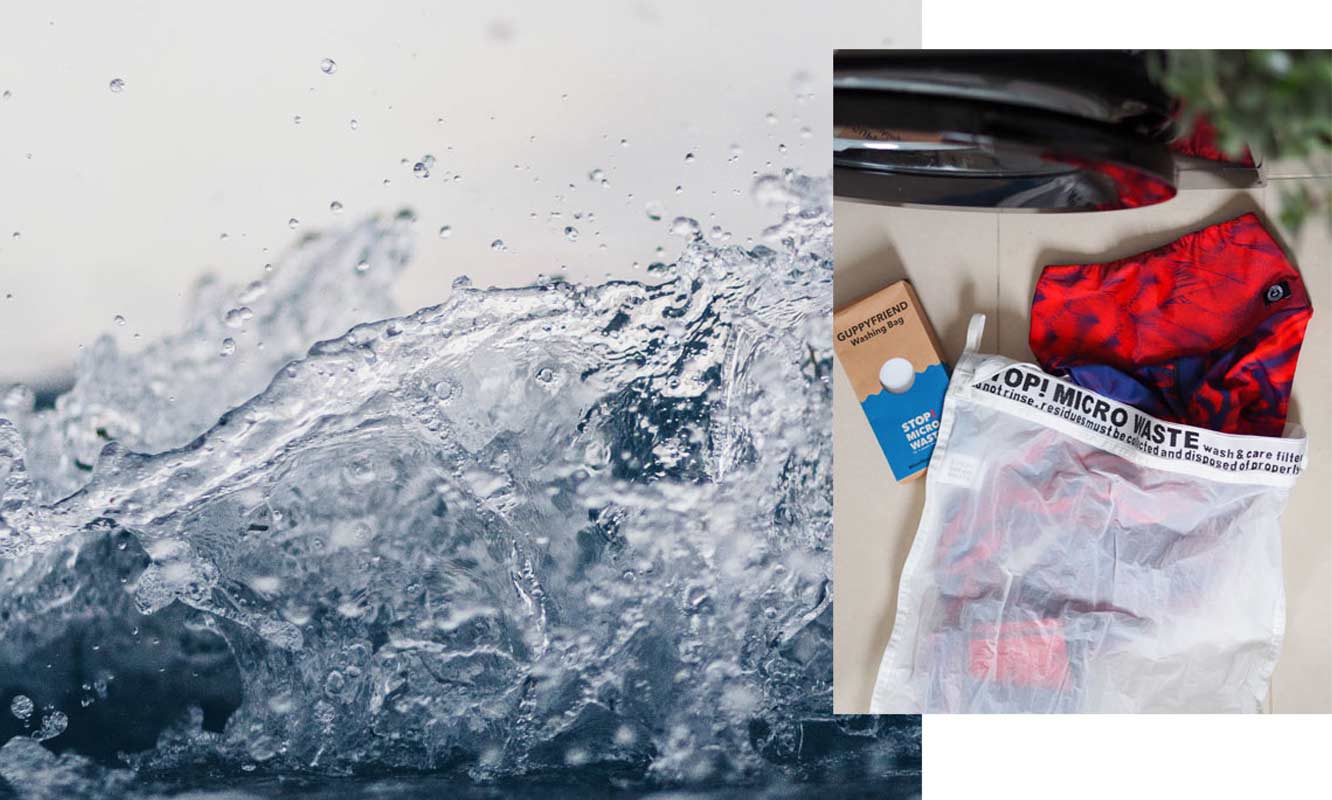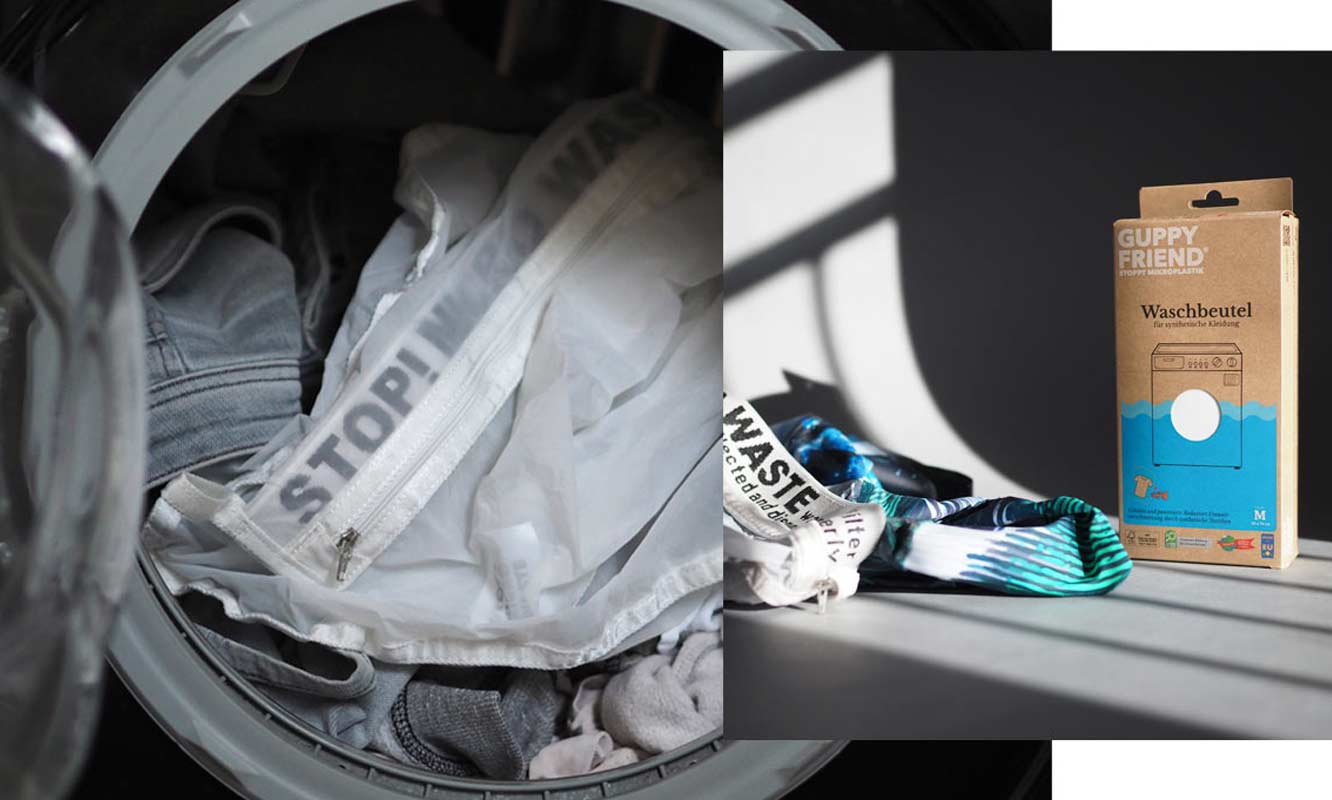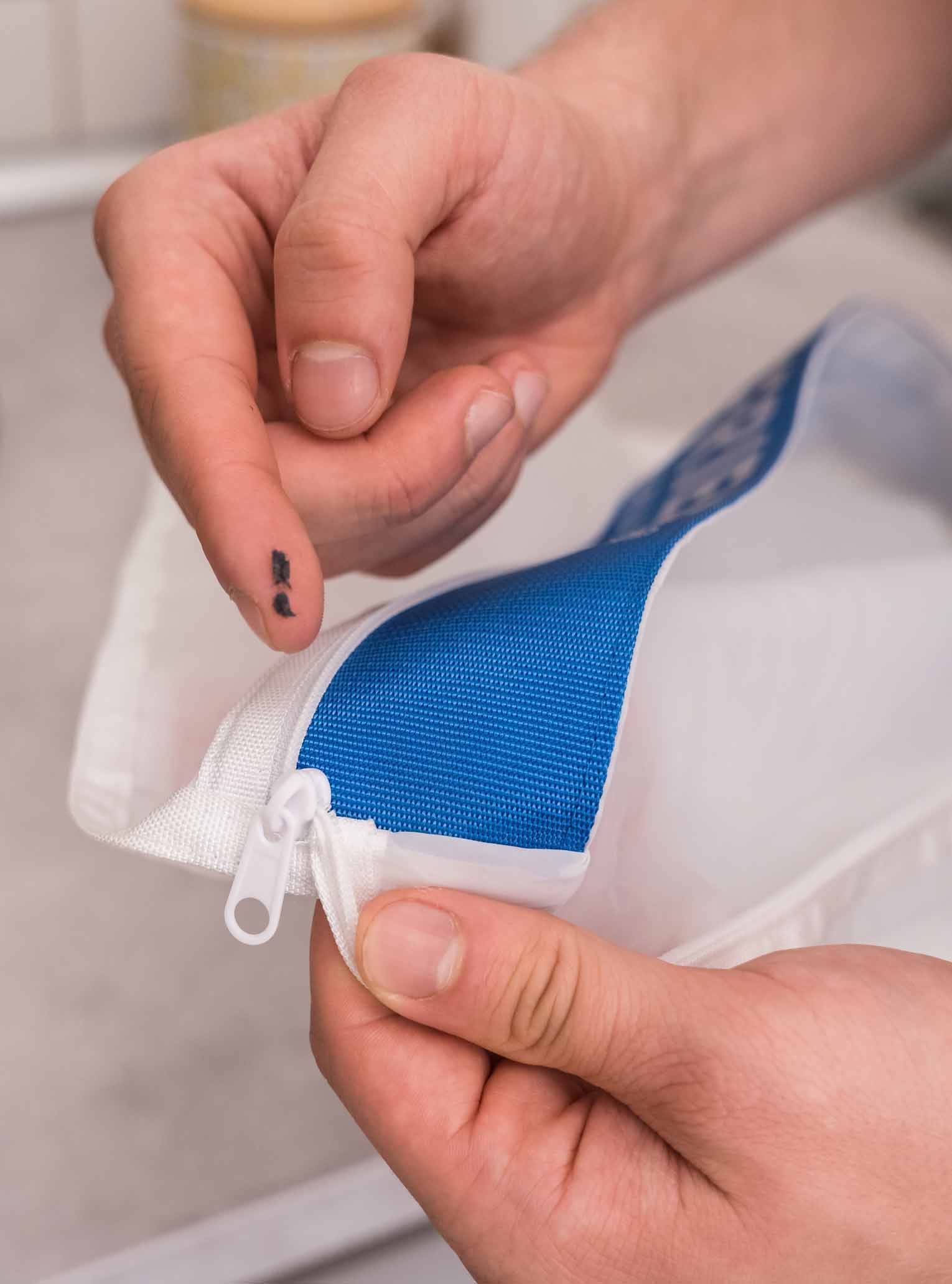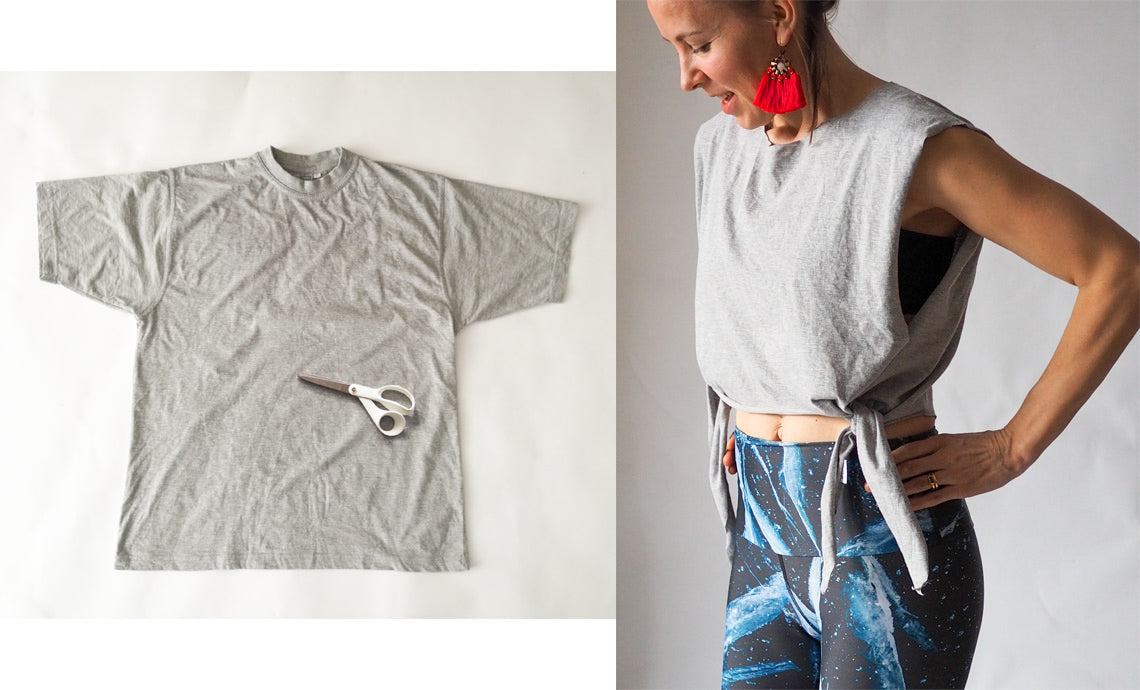YOGA LEGGINGS MIKROPLASTIK-TEST MIT GUPPYFRIEND WASCHBEUTEL
Es ist ein echtes Problem, das leicht zu ignorieren ist, da man die Mikroplastikfasern kaum sehen kann. Mit jedem Waschgang brechen kleine Faserstücke unsere Kleidung ab und machen sich auf den Weg von der Waschmaschine in Flüsse, Seen und Ozeane.

Mikrofasern sind winzige (mit bloßem Auge kaum sichtbare) Kunststoffpartikel, die beim Waschen von synthetischen Textilien ins Abwasser gelangen.
Das führt uns zu einer wichtigen Frage: Verlieren Arctic Flamingo Yoga Leggings beim Waschen Mikrofasern? Wenn man bedenkt, dass alle Stoffe (Mikro-)Fasern verlieren - die kurze Antwort ist ja!
Da ich mich um das Problem von Mikroplastik in unserer Nahrungskette sorge, habe ich mich für den Guppyfriend Waschbeutel entschieden, der extrem kleine Plastikfasern auffängt, die sich beim Waschen lösen.
Ich füllte meinen Guppyfriend Waschbeutel mit mehreren Paar Arctic Flamingo Yoga Leggings und war sehr gespannt (und ehrlich gesagt etwas ängstlich!) auf das Ergebnis.
Wie benutzt man die Guppyfriend Waschbeutel richtig?
Es wird empfohlen, den Waschbeutel maximal zu 2/3 zu füllen und nur Kleidungsstücke ähnlicher Farben zusammen in einem Waschbeutel zu waschen. Man sollte nur Waschmittel ohne Kunststoffe verwenden und den verschlossenen Guppyfriend Waschbeutel zusammen mit anderen Kleidungsstücken wie gewohnt waschen.
Ich habe auf der Guppyfriend Webseite gelesen, dass es ein paar Waschgänge dauern kann, bis man die aufgegangenen Mikrofasern in den oberen Ecken des Beutels findet. Hier steht, dass man den Waschbeutel in der Regel einige Male benutzen kann, bevor man die Fasern entfernen muss. Sobald sich genügend Fasern in den Ecken des Beutels befinden, sammle die Mikrofasern und entsorge sie im Restmüll.
Achtung! Nicht unter fließendem Wasser waschen! Das würde den Zweck des Waschbeutels zunichte machen.

Unser Test
Wir haben unsere Leggings einige Male gewaschen. Wir legen die Leggings in den Guppyfriend Waschbeutel, verschließen den Beutel und stecken ihn in die Waschmaschine. Am Ende des Waschgangs sehen wir, wie viele Mikrofasern die Yoga Leggings verloren haben und wie viele Mikrofasern wir eingespart haben, damit sie nicht in den Abfluss gelangen. Zwischen den Waschgängen lassen wir die Leggings vollständig trocknen. Und los geht’s!
WASCHGANG #1 bei 30°
Ich fand eine kleine Faser in der Naht des Waschbeutels, und aufgrund der Farbe muss es sich um ein loses Stück der Naht handeln. Ich konnte keine anderen sichtbaren Fasern in den Nähten von Guppyfriend finden. Das werte ich als positives Feedback!
WASCHGANG #2 bei 30°
Der Sack war wieder frei von sichtbaren Fasern. Ich ließ die Leggings vor dem nächsten Waschgang trocknen.
WASCHGANG #3 bei 30°
Ich konnte keine sichtbare Mikrofaser finden, auch nicht in den Ecken oder Nähten. Ich muss mit diesem Ergebnis sehr zufrieden sein, aber das bedeutet wahrscheinlich nicht, dass es überhaupt keine Mikrofasern gab! Sicherlich kann es transparente oder mikroskopisch kleine Teile geben, die für das bloße Auge unsichtbar sind.
Was soll ich von meinem Testergebnis halten?
Ich war immer sehr skeptisch gegenüber dem Guppyfriend Waschbeutel.
Erstens glaube ich, dass man aufpassen muss, wie man ihn richtig benutzt (ja, es ist nur ein Waschbeutel, aber man muss vorher die Gebrauchsanweisung lesen!)
Zweitens frage ich mich, ob die relativ geringe Menge an Fasern, die der Beutel während seiner Lebensdauer auffängt, die Kosten für seine Herstellung aufwiegt.
Aber einer der Hauptgründe, warum ich die Tasche mag, ist, dass ich die Arbeit der NGO, die hinter Guppyfriend steht, sehr schätze, um das Bewusstsein für das Problem der Mikroplastikverschmutzung zu erhöhen.
Ich finde, man sollte den Beutel immer benutzen, wenn man sehr flauschige Synthetikwaren wie Fleece wäscht! Deine Yogakleidung besteht höchstwahrscheinlich aus glatten, nicht haarigen Fasern, und das ist auch der Grund, warum nach dem Waschen der Arctic Flamingos nichts mehr im Beutel zu sehen war.
Ich denke, wenn man, wie in unserem Test, keine Mikrofasern im Waschbeutel sehen kann, ist das leider nicht sehr motivierend, den Waschbeutel zu benutzen!

Wenn du deinen eigenen Guppyfriend Waschbeutel kaufen möchtest, kannst du ihn zusammen mit Deinen Arctic Flamingo Leggings kaufen und Dein Bestes tun, um zu vermeiden, dass Mikrofasern in unsere Gewässer gelangen.
Guppyfriend ist ein Produkt von LANGBRETT und unterstützt STOP! Micro Waste. Diese gemeinnützige Organisation wurde von LANGBRETT, einer Gruppe von Surfern und Naturliebhabern, ins Leben gerufen. Alle Einnahmen aus dem Verkauf der Waschbeutel werden für die Entwicklung weiterer Lösungen, Maßnahmen zum Schutz der Umwelt vor (Mikro-)Plastikverschmutzung und für die STOP! Plastik Akademie verwendet.
Gegen Mikroplastik





Der GUPPYFRIEND Waschbeutel ermöglicht ein schonenderes Waschen von synthetischer Kleidung und sorgt dafür, dass beim Waschen weniger Mikrofasern in die Flüsse und Meere gelangen. Nach dem Waschen der Wäsche im GUPPYFRIEND müssen die Mikrofasern aus dem Beutel entfernt und im Restmüll entsorgt werden.





